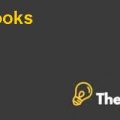
Working at workouts: Commercial Real Estate Debt in Distress Case Solution
Introduction
The case discusses the disadvantages of holding debt under the economic downturn and its severe impact on the maturity period. Whatever the focus of the event was, the level of rentals decreased due to devaluation of property in the economic crisis of 2007-2008.
Drive property solutions were focused on overcoming the non-performing debt figures caused by the default of the borrowers. Under different circumstances, it provided different methods to analyse the importance of these debt and how to manage positive results under the discounted value of debt obligations.
In the case, Northwinds Community Crossing was in the list of defaulters due to fewer receipts of rentals and high volume of debt obligations due to higher interest rates during the economic downturn.
However, sudden changes in the owner ship would have decreased the level of default and to reduce the huge payments under the agreement. Burton properties in the case was the main borrower of NWCC, less focus of the owner of the property had led to the expected loss under defaults. Burton (owner) shifted to a job at a high schoolas a basketball coach..
Therefore, he was no longer focused operating retail outlets, thus he was looking for new purchase of property through debt. Which is why he decided to take over Northwinds Community Crossing, a property believed could generate positive cash flows.
After critical analysis of the property, he managed a contract with his personal bank, Colonial National. The main focus of the deal was to allow a flexible debt payments through adjusted interest rates through lower interest value.
After careful considerations, it was decided that the current economic situation would make the entire payments defaulted by the borrower due to a consistent decrease in the rentals, as well as higher interest rates. Whereas, the property tax rates remained high under the agreement. Moreover, this decreased the value of the property.
After the assessment of defaults over a selected period, legal options would help to recover the loss of overpayments under the loan. For that, either foreclosure or the appointment of the receiver would take place to overcome potential loss.
This process could reduce the level of defaults by allowing third party to negotiate the deal on behalf of the owner; this would help to critically evaluate the deal through the expertise of the intermediary (Under the case of receiver).
If the loan would not be paid in the full period of maturity, then the process of foreclosure would apply in order to regain the property under the mortgage agreement. This process consisted of selling to another party in order to regain the rights of the mortgage.
It has been determined from the case, that the main cause of the defaulted loan would either come from the expected performance of the entity (Borrower) or the economic fluctuations which would increase the level of inflation rate and thus increase the interest rate.
Loan in default
The main reason for the loan to default was the decrease in level of rental receipts due to the economic downturn. This decreased the value of property and increased the interest rate due to debt obligation. This reconciles the actual figure with the expected one due to the change in interest rate, plus the additional prime rate according to the demand of property. Following are the main causes of loan default................
This is just a sample partial case solution. Please place the order on the website to order your own originally done case solution.









